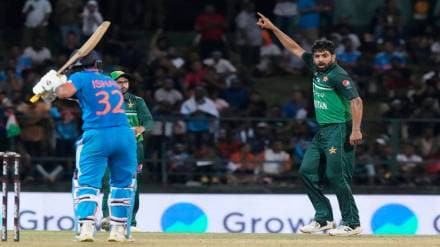By Tushar Bhaduri
For a tournament considered to be a dress rehearsal for the World Cup, the ongoing Asia Cup is making news for what’s happening off the field rather than on it. Whatever the likes of Ishan Kishan, Hardik Pandya, Shaheen Shah Afridi, and Haris Rauf have done, they have been upstaged by Najam Sethi and BCCI secretary Jay Shah.
Their verbal spats, played out through official statements and on social media, make it difficult to imagine that India and Pakistan co-hosted two World Cups (it would have been three but for the 2009 Lahore attack on the Sri Lankan team bus). A visit by either team across the border is now fraught with uncertainty – India flatly refuses to go to Pakistan, citing, among other things, security concerns – while the Pakistan prime minister had to set up a high-level committee to help decide whether their team will visit India for the World Cup.
However, both parties know that India-Pakistan matches are the hottest cake in the cricket bakery. With bilateral series ruled out for the foreseeable future, there is every attempt to milk this cash cow as much as possible. There are limits to the extent that can be done in ICC multilateral events, but in the Asia Cup, the member boards (read BCCI) can call the shots. Hence, the provision of two guaranteed India-Pakistan fixtures, with a third on the cards if both teams make the final.
What else can explain the provision of a reserve day for the India-Pakistan game in the Super 4s, announced barely 48 hours before the match? That the additional day has been allocated to only one game proves that the other teams are there only to make it look like a multilateral event, and the Asia Cup is just a pretext to hold India-Pakistan matches. What Sri Lanka – hosting the ‘all-important’ match – and Bangladesh feel about this snub is an interesting question. They are being indirectly told that they don’t matter.
The basic sporting ethos of a level playing field has been given a quick burial, turning the Asia Cup into a sham tournament. There was a saying during the British Raj that ‘Show me the man, and I will show you the law’, implying that everyone was not equal when it came to dispensing justice. The wise men running the Asia Cup would say: ‘Show me the match, and I will show you the playing conditions.’
Talk of making the rules as one goes along!
That India may end up playing three days in a row, or on four days in five, or five days in seven – increasing the risk of injuries so close to the World Cup – may not be too big a concern for them.
Misplaced priorities
With India having only three games after the Asia Cup before the World Cup kicks off, the Asia Cup was an opportunity to tie loose ends – and everyone knows there is more than one concern surrounding team composition. But all that has happened in the last few months with regard to the Asia Cup would lead many to believe that the top priority for the BCCI was not India’s World Cup preparation or even the smooth conduct of the continental tournament but to rub the Pakistan Cricket Board’s (PCB) nose in the dirt as much as possible.
If BCCI had no intention to send its team across the border, why was Pakistan chosen as the host country for the Asia Cup in the first place? The bilateral situation wouldn’t have been much different from now when that decision was made. And when the PCB offered to host India’s matches in the UAE, and later the entire tournament there, to placate the BCCI, the latter refused to play ball again and insisted on having the tournament in Sri Lanka.
Things came to such a head that Pakistan openly contemplated not just skipping the Asia Cup altogether, but also refusing to come to India for the World Cup – where they have to face India at the Narendra Modi Stadium in Ahmedabad, not their first-choice venue in the country.
Eventually, better sense prevailed, but with most of the Asia Cup games being held in Sri Lanka, the original tournament hosts have had to make frequent and tiring journeys from one extremity of the subcontinent to another. That’s not ideal, not just from a performance and fitness point of view, but also from the standpoint of the carbon footprint during these environmentally-conscious times.
And to think that one of the arguments put forward by the BCCI against holding the Asia Cup in the UAE was the high temperatures there at this time of the year, which could have an adverse impact on the health of players so close to the World Cup!
Even in Sri Lanka, common sense seems to have gone unheeded, with the drier venues such as Dambulla and Hambantota being ignored in favour of Colombo and Pallekele, which see rains almost on a daily basis in September. All but one game in Pallekele was rain-affected, with the India-Pakistan game abandoned after one stop-start innings. The forecast for the Sri Lankan capital is hardly any better. Basically, the Asia Cup is at the mercy of the rain gods, but short-sighted sports administrators also have to take the blame.
A change in host cities was contemplated even in the middle of the tournament, due to the weather prediction, but the Asian Cricket Council chose to stick to the schedule due to ‘logistical’ reasons, only to add a reserve day for ‘the one’ fixture late in the day.
So much for far-sighted planning!
